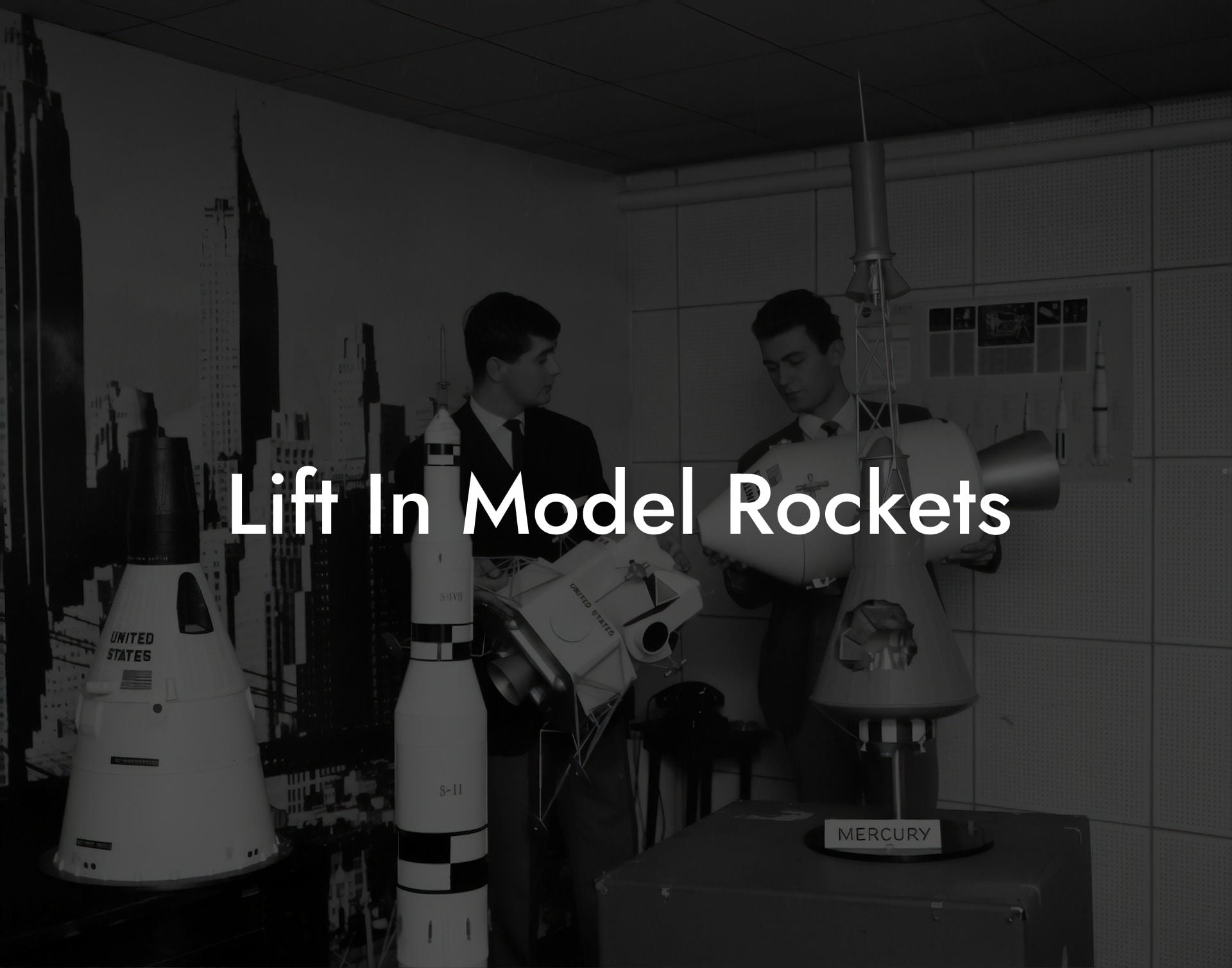Imagine soaring to new heights with your model rockets, defying gravity and pushing the limits of innovation. Welcome to the world of model rocketry, where creativity meets science and adventure awaits. Whether you're a seasoned enthusiast or just starting out, this comprehensive guide will blast off your knowledge and skills, taking your model rocket game to the next level.
Quick Links to Useful Sections
What Are Model Rockets?
Model rockets are scaled-down versions of real rockets, designed to mimic the look and performance of their full-size counterparts. They typically range from a few inches to several feet tall and are powered by small motors that produce a controlled thrust. Model rockets can be made from various materials, including plastic, wood, and even 3D-printed components.
The hobby of model rocketry has been around for decades, with enthusiasts of all ages designing, building, and launching their own creations. From simple, store-bought kits to complex, custom-built models, the possibilities are endless in this exciting and rewarding hobby.
The Science Behind Model Rockets
Model rockets operate on the same principles as real rockets, using a combination of thrust, aerodynamics, and gravity to achieve flight. The four key forces involved in model rocketry are:
- Thrust: The forward force generated by the rocket motor, which propels the model upward.
- Drag: The backward force caused by air resistance, which slows the model down.
- Lift: The upward force created by the shape of the model, which helps it rise into the air.
- Weight: The downward force of gravity, which pulls the model back toward the ground.
By understanding and balancing these forces, model rocket enthusiasts can design and build more efficient, stable, and high-performing models.
Looking For The Best Model Rocket Kits? You'll Love These:
Types of Model Rockets
Model rockets come in a variety of shapes, sizes, and styles, catering to different skill levels and interests. Some popular types include:
- Beginner Kits: Pre-assembled or easy-to-assemble kits perfect for newcomers to the hobby.
- Scale Models: Accurate replicas of real rockets, often featuring intricate details and realistic paint schemes.
- Competition Models: High-performance rockets designed for competitive flying and altitude challenges.
- Experimental Models: Custom-built rockets that push the boundaries of innovation and creativity.
Whether you're looking for a fun, entry-level project or a complex, high-tech challenge, there's a model rocket type to suit your interests.
Building and Customizing Model Rockets
One of the most rewarding aspects of model rocketry is designing and building your own creations. With a few basic tools and some creativity, you can customize your models to achieve unique looks and performances.
Some popular customization techniques include:
- Painting and Decals: Adding realistic paint schemes and decals to give your model a professional finish.
- Component Upgrades: Swapping out stock parts for high-performance alternatives, such as stronger motors or lighter materials.
- 3D Printing: Creating custom components, such as nose cones or fins, using 3D printing technology.
By experimenting with different materials, techniques, and designs, you can create truly one-of-a-kind model rockets that showcase your skills and creativity.
Launching and Recovering Model Rockets
The thrill of launching your model rocket is unmatched, but it's only half the fun. Recovering your model safely and efficiently is just as important, ensuring it can fly again and again.
Some key considerations for launching and recovering model rockets include:
- launch Site Selection: Choosing a safe, open area with minimal obstacles and wind interference.
- Recovery Systems: Using parachutes, streamers, or other devices to slow the model's descent and ensure a soft landing.
- Tracking and Recovery: Using GPS, radio tracking, or visual spotting to locate and retrieve your model after launch.
By mastering the art of launching and recovering model rockets, you'll be able to enjoy the thrill of flight while protecting your investment and ensuring a long lifespan for your models.
Resources and community Support: Your Next Steps
Joining a community of like-minded enthusiasts is a great way to learn new skills, share knowledge, and stay inspired in the world of model rocketry. Some popular resources include:
- Online Forums: Websites and social media groups dedicated to model rocketry, where you can ask questions, share projects, and connect with others.
- Local Clubs: Joining or forming a local model rocketry club to meet fellow enthusiasts, share knowledge, and participate in group launches.
- Manufacturer Support: Reaching out to model rocket manufacturers for technical support, tutorials, and product guidance.
By tapping into these resources and connecting with the model rocketry community, you'll be well on your way to becoming a skilled and knowledgeable enthusiast.
Frequently Asked Questions: Model Rocketry 101
Here are some common questions and answers to get you started on your model rocketry journey:
1. What is the best type of model rocket for a beginner?
A beginner kit with a simple design and easy-to-assemble parts is ideal for newcomers to the hobby.
2. How high can model rockets fly?
Depending on the design and motor, model rockets can reach altitudes ranging from a few hundred feet to several thousand feet.
3. Are model rockets safe?
When built and launched properly, model rockets are safe and pose minimal risk to people and property.
4. Can I build a model rocket with my kids?
Absolutely! Model rocketry is a great hobby to share with family and friends, promoting teamwork, creativity, and STEM education.
5. How much does it cost to get started with model rocketry?
The cost of getting started with model rocketry can vary, but beginner kits and basic supplies can be found for under $100.
Looking For The Best Model Rocket Kits? You'll Love These:
Useful Interruption: Dive deeper into the world of Model Rockets with our most popular sections. If there is anything you think is missing or anything you would love for us to write about, just give us a shout.
- Getting Started & Basics With Model Rockets
- Model Rocket Design, Build & Customization
- Model Rocket Propulsion & Engine Technology
- Model Rocket Launch Techniques & Recovery
- Model Rocket Advanced Rocketry & Innovations
- Model Rocket DIY and Customization
- Model Rocket Equipment Reviews & Digital Tools
- Community, Competitions & Education
- Model Rocket Troubleshooting & FAQs
- Model Rocket Bonus/Seasonal & Niche Topics
A group of model rocket enthusiasts gathered at a field for their weekly launch event. Among them was Dave, a seasoned builder known for pushing the limits of hobby rocketry. This time, he had outdone himself.
“Ladies and gentlemen,” Dave announced, dramatically pulling a cloth off his latest creation, “I present to you: The Kraken!”
The crowd gasped. This wasn’t just a model rocket, it was a monster. The thing stood 8 feet tall, had six clustered engines, and was covered in enough duct tape to qualify as a classified aerospace project.
“Dave,” muttered Steve, the cautious safety officer, “Have you, uh… done the math on this?”
“Math?” Dave scoffed. “I built it in my garage at 3 a.m. with parts from eBay. This is an art piece, Steve.”
The countdown began.
5…
4…
3…
2…
1…
The engines ignited with a BOOM, and The Kraken shot up… kind of. It immediately did a violent barrel roll, narrowly missing the spectators before skyrocketing at an angle that could only be described as “legally questionable.”
The crowd collectively ducked as The Kraken flew straight over the adjacent cornfield, where Old Man Jenkins, the grumpiest farmer in town, was minding his business.
KABOOM!
The rocket disappeared behind the barn. A moment later, a flaming piece of Estes igniter wire landed at Steve’s feet. The silence was deafening.
And then, an unmistakable sound echoed across the field.
Jenkins’ shotgun being cocked.
“DAVE!!!” Steve shouted. “RUN.”
And that was the day Dave invented the first-ever biologically powered rocket booster: pure adrenaline.
To this day, nobody knows where The Kraken landed, but legend has it, it still haunts the skies, terrifying unsuspecting drones and low-flying birds.















